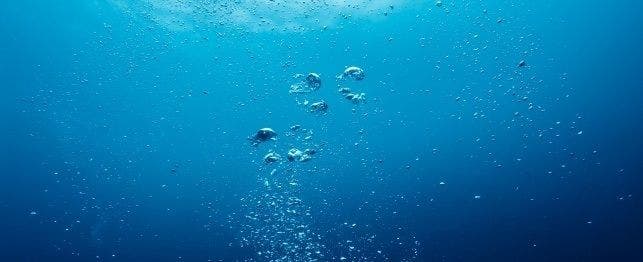
Selecting an Aeration System for Your Saltwater Aquarium
Some marine aquarists maintain that if water circulation in your tank is adequate, you don’t need an aeration system. But the advantages of having one usually outweigh the disadvantages. Unless you have a very small, shallow tank and an extraordinary circulation system, you should employ an aeration system to help maintain good water quality.
Fish, too, need oxygen but in a dissolved form. In the oceans, waves and swells entrain gases, and turbulence mixes them into the water column. Circulation systems mimic that process by bringing water to the surface, where it absorbs oxygen on contact. Aeration systems do the job by generating bubbles.
Finding the Right Size Bubbles
The size of your bubbles will determine how much oxygen gets into the water. Smaller bubbles are more effective at doing this because cumulatively they have a larger surface area than the same amount of oxygen in bigger bubbles. That means more oxygen comes into contact with the water and more gets dissolved.
But small bubbles are not right for all species of fish. While bubbles the size of a pinhead (a millimeter) will be fine for most fish, animals such as seahorses, may mistake them for prey and consume them, a fatal mistake; or the bubbles may get lodged in swim-appendages forcing some specials to the surface where they won’t survive (a problem with brine shrimp). For these animals, a larger bubble that can’t be swallowed might be better.
Choosing the Right Air Supplier
There are essentially three parts to an aeration system: the pump, the air-tool and the tubing that connects them.
Air pumps pressurize air to operate airlifts, air diffusers (commonly known as airstones) and air-driven foam fractionators (also called protein skimmers). The most widely-used and practical kinds of pumps are those of the “diaphragm” type, and it’s easy to figure out why. They are sturdy, simple designs that are usually silent, easy to service and use little energy. Before you decide on an air-pump, however, make sure to keep in mind what your fish will require and look at the manufacturer’s recommendations to determine if it’s adequate for your system. For most home aquariums, 75 percent saturation is the average for well-aerated tanks, while 95 percent is difficult to achieve.
If you’re just getting started with your tank, make sure that the air pump is positioned higher than the water level in your tank or that it has a mechanism, such as a check-valve, that prevents back-flow. Otherwise if there is a power or air pump failure, water will drain out and cause flooding, and most likely damage your equipment.
Hoses
Hoses, or air-line tubing, connect the pump to the aerator. These hoses are usually 3/16 of an inch in diameter (inside) and flexible. Using better quality hoses is worthwhile.
Airstones
Airstones are very popular and produce pretty bubbles that some use as part of their tank décor. They are made of semi-porous materials, each affecting the size of the bubbles. Glass (fused bead) airstones are highly recommended because they don’t clog easily, are easily cleaned, don’t break and produce bubbles that are all about the same size, usually about one millimeter. Ceramic or sand wands can be problematic: they break easily, are difficult to clean, make varying bubble-sizes and will easily clog. Also remember that because salt water is denser, the size of your bubbles will be smaller in salt water than in fresh.
Under-Gravel Systems
Under-gravel systems push the air up through the gravel at the bottom of a tank. They are also highly recommended, but again, it depends on what sort of fish you are keeping. The most common complaint about using an under-gravel filter is that it’s more difficult to clean. But the bonus of the under-gravel systems is that they also aerate the substrate, which, in an established system, contains the “good” bacteria that help maintain good water quality by converting the waste and toxins out of the water.
Wooden Mechanical Diffusers
Wooden mechanical diffusers are most suitable for air-driven protein skimmers and not recommended for in-tank use because the fine bubbles they produce are known to cause embolisms and gas-diseases in fish. Foam-fractionators remove protein waste, such as mucous shed from the fish, which can destroy water quality.
Which air-tool is right for your system is something you have to determine based on what fish you have or want. Make sure that the air-pump you purchase has at least one extra air-valve outlet than what you will be using. Never use metal air-valves, or anything metal for that matter, in or around your saltwater system. Salts easily corrode metals and if these ions get into the water, they could harm your pets. The extra air outlet should be partially left open to prevent back-flow or backpressure to the pump, which can damage it. If the bleeder outlet makes a hissing noise that is tempting you to close it off for good, attach a short (couple of inches) piece of air tubing on the outlet and the sound will stop.